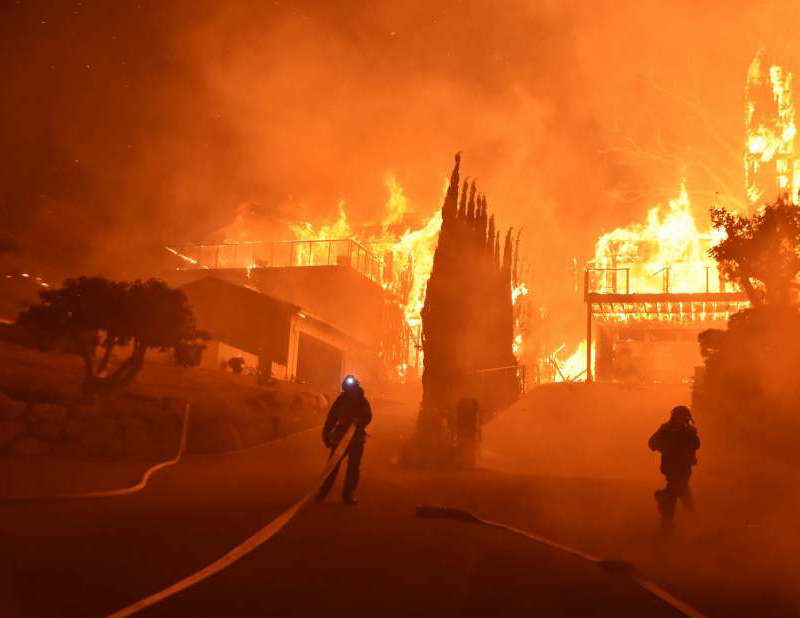Although the start of a new year is usually full of new hope and optimism, for those
living in regions hit by recent natural disasters, the New Year brought neither. 2017 had
its fair share of natural disasters, including Hurricane Irma and the very recent earthquake
in Alaska, and this year is no different, already being threatened with the arrival of
several natural disasters. While it is true that these events carry an air of hopelessness
because of the great casualties and costs of restoring the area back to its original state,
people and governments alike continue to restore hope by picking up the pieces once the
storm has passed.
One such case was a chain of 29 wildfires in southern California last December. Both the
state governor, Jerry Brown, and President Drumpf declared the situation a “federal state
of emergency” after fires continued to flare up and blaze despite the best efforts of the
state fire department. Though casualties were few and only six of 29 total fires became
major threats, civilians experienced extreme discomfort and confusion through constant
evacuations, school closures, and power outages. Most importantly, property losses were
rampant, reported to cost more than three billion dollars in total.
“When I heard about the fires, I was quite surprised,” said Amy Kim (10), a former
resident of Irvine, California. “Wildfires are frequent in California year-round, but this
particular chain of fires stood out because they were fueled by powerful winds and the
lack of rain, causing more flames to spread and more damage to be inflicted.”
Americans from all over the country—NGOs and individual citizens—rose to help the
relief effort. Although the government did provide help through agencies that organized
and rescued displaced people, NGOs such as Red Cross Youth and local news
organizations such as ABC Los Angeles expedited this process by launching campaigns
and online fundraisers in order to collect millions of dollars and resources for victims of
the fires. People from across the country flooded with support, donating to evacuation
centers and charities, looking after displaced animals, and raising awareness about the
crisis.
“In times of crises, I think that it is imperative for people to help each other,” said Eric
Hwang (10), a member of GIN. “We should not just depend on the government if an
earthquake or a wildfire breaks out because there are so many ordinary citizens who have
the power to step up and save lives.”
Another disaster that occurred recently was the earthquake in Japan last December. With
a magnitude of 5.6, the earthquake was only serious enough for occupants of Tokyo and nearby cities to feel its impact. More importantly, the incident foreshadowed a larger
problem. Immediately following the earthquake, scientists working for the Japanese
government under the Earthquake Research Committee reported that a Magnitude 9
earthquake, an extremely rare occurrence, was on its way soon. But is there anything that
can be done to mitigate the effects of this mega-earthquake?
“Based on my experience [with the Ebola crisis] in Sierra Leone, I think being prepared
always helps in these situations,” said Dr. Gerhard, high school principal. “One of the
things that helped me during that time was thinking ‘what if’ constantly. It definitely pays
to be very prepared and have contingent plans for whatever happens on that day, whether
it be evacuating the school or closing the school down for a week.”
But if an earthquake of such massive scale strikes Japan while its people are unprepared,
the consequences will be appalling. To put this hypothetical situation into perspective, it
helps to look at the 2009 Shizuoka earthquake. The way the government dealt with the
damages then could serve as a model for future disasters because of how efficient and
practical the solutions were. Most of the 134 injuries came from collapsing buildings and
objects, but there was only one death, as federal agencies and local fire departments
worked efficiently to rescue people trapped in the fallen infrastructure. Additional action
from the government helped to calm the crisis. They ordered a halt in motorways and
train services temporarily, and the nearby nuclear plant shut down its reactors as well.
“Earthquakes were really frequent in Japan,” said Joe Juseong Kim (11), a former
resident of Japan. “I think I got used to them happening pretty often, so I wasn’t really
affected by them. However, we did have an earthquake drill once a year at school that is
similar to the fire drills we have here in SIS.”
The frequency and inevitability of natural disasters in disaster-prone places like Japan
and California may make life more inconvenient or difficult. But with the help of both
government and citizens working together, like during the California wildfires and the
2009 earthquake, people and cities will be able to recover from these types of incidents
swiftly and successfully in the future as well.
Government and people combine efforts for natural disaster relief
Jenny Seo
|
Jan 31, 2018
0

